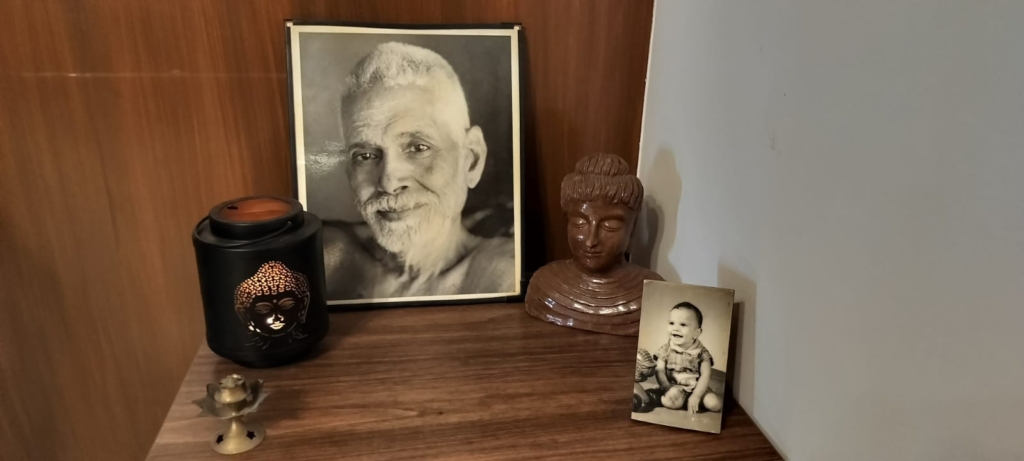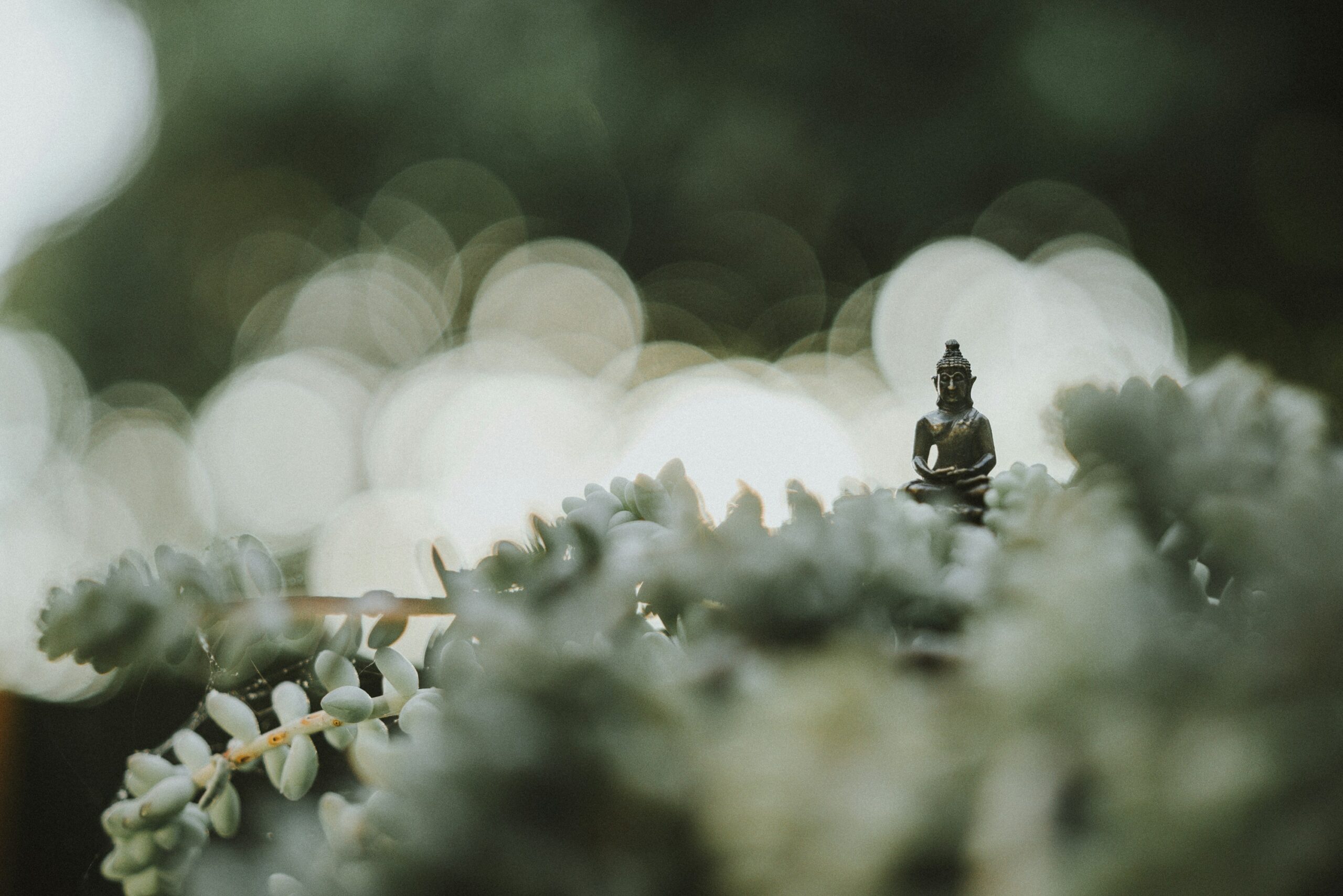Alright, I am finally here on this topic. I had created a placeholder for this post but never got around to writing it. I kept putting it off for some reason, not sure why. There were other things I wanted to write about in the meantime:
There might have been some other reason for not writing this earlier I was not conscious of; it may emerge in the writing of this post. One thing I have understood is that things happen in their own time. So, all good.
A friend of mine, who is part of Soka Gakkai asked me to read this book a couple of years ago.

The title appealed to me right away because the Buddha has been an inspiration from childhood. I was fascinated by his story of enlightenment, and similarly the early experiences of J Krishnamurti.
As the stories go, both sat under a tree (the Buddha under the Bodhi tree, K under a Pepper tree) during their respective enlightenment experiences. I found it fascinating that people could have such mind-boggling experiences that transformed them entirely.
Like many others who have read these stories, I too wondered if I might be transformed similarly, be free of suffering. Both spoke of how the freedom that was real to them was accessible to all human beings, yet so few people were transformed during their lifetimes, listening to their teachings. Was this reality accessible to all of us common folks? Were the Buddha and K (and others) outliers? Or were they early precursors for a shift in human consciousness?
I have simply not been ambitious in a worldly sense – money, fame, power, accomplishment – but this desire to attain spiritually was there from an early time.
To be a Buddha. Ha!
During my grade 11 pottery class at Rishi Valley School, I created a clay work that is my most prized possession. It was a headpiece of the Buddha and it turned out fantastic. Well, my teacher helped me considerably so it was not entirely my creation but I remember working on it for months – it was a labour of love – and I loved what finally emerged. The smile in particular was just right, and I like to think it reflected the happiest time of my life, as a student at RVS. It has been hard to recapture that sense of being at home anywhere else since.
A few years later, I tried creating the same piece on my own, and it flopped badly. I just could not shape it anything close to the piece I had made in school. The obvious conclusion was that my teacher was not around to help me this time around, but it also reflected some inner disconnect that had already happened in my life.
That Buddha piece I created in school remained in my mother’s home for the longest time. Now it sits at the entrance to my apartment, radiating peace; along with a framed picture of Ramana Maharshi for the compassion he emanates, and a childhood photo of mine that I love for the innocent open joy it captures. It is an odd but promising combination of three possibilities.

The theme of the Buddha in my life has been recurrent.
One of my favourite books is Siddartha by Hermann Hesse, a fascinating narrative of a young man drawn to the teachings of the Buddha, and his journey to attain enlightenment.

It is a classic must-read for anyone interested in these matters. I have read it multiple times over the years; every time I see myself in that young man setting out to find the truth of our existence.
[Aside: I need to write a separate piece about my fascination with the Hero’s journey.]
A couple of decades later, when I was teaching at The School-KFI in Chennai, we ended our time at the Damodar Gardens campus with a theatrical performance titled Story of the Buddha.
One of the segments of the narrative was the enlightenment episode.
After many years of different methods of meditation, Siddhartha (before he becomes the Buddha) senses that he is close to his goal and resolves one night that he will not get up from under the Bodhi tree until he attains enlightenment.
During the night, Mara tries to entice Siddhartha away from his goal with various kinds of temptation but is thwarted. Siddhartha remains resolutely unwavering in his meditation. Mara challenges Siddhartha to prove he is worthy of wisdom. In a poignant gesture, Siddhartha touches the earth with his fingertips and calls upon it as the witness to his enlightenment. With that, Mara disappears, and Siddhartha becomes Buddha the Awakened One.
It is a very goose-pimply moment.
So, the Buddha has been a constant figure in my scheme of things for a long time. However, as I got older and made a mess of my life, it became clear that the possibility of enlightenment had faded away, and I was left with the depressing realization that yeh nahin hone wala. I had even tried sitting under a Peepul tree a few times to no avail. Lol.
I resigned myself to living out the rest of my life as quietly, sensibly, and inconsequentially as I could. After all, the material world held no interest for me, and spiritually I was not going anywhere. I would try to eke out this lifetime. I could try again next time around with better luck perhaps. Ha!
When my friend from Soka Gakkai asked me to read this book, I sat up because the title seemed to suggest that Buddhahood was perhaps not as distant a possibility as I had imagined it earlier.
During my first reading of the book, my biggest takeaway was that Buddhahood was not reserved for the few, it was a state that all human beings could attain in this very lifetime. It was a non-exotic idea of Buddhahood – more down-to-earth, something that could practically guide and shape our daily lives.
At the same time, I attended a neighborhood chanting session of Nam Myoho Renge Kyo ; while I liked the chanting, I was not drawn to the group discussions and did not attend any further meetings.
Also, the book seemed to get into fairly complex ideas and I lost interest.
Fast forward several months.
I had lost a major work assignment worth two-thirds of my income. I had divorced and was committed to significant alimony and child support for the next several years. In a bizarre turn of events, my daughter became estranged from me. My health took a sharp nosedive. My brother took his life and I did not know what to do next.
I was in a daze; it was then that I picked up the book again. This time around, my reading of it was entirely different. It made complete sense. I also started chanting Nam Myoho Renge Kyo daily, several times, on my own.
Slowly, ever so slowly, I found that I moved from wanting to have no problems – wishing for some magic wand that would make them all disappear – to a place where I started developing the courage to meet and solve those problems one by one. The magic was in rediscovering my capacity to meet life, not in wishing away the difficulties that presented themselves.
I remember one particular instance vividly. I had to renew my driving license in Chennai, while I was sitting here in Mumbai. For many people, this is perhaps a simple practical task, one of many things that they accomplish daily with ease without batting an eyelid. Not for me: I was the INFJ who hated having to deal with yucky details like government bureaucracy. I had done more than my share of that rubbish over the years – when my father passed away, then my mother during Covid, selling her home subsequently and buying a new apartment for my family – at each stage having to interface with unhelpful people intent on making your life so difficult that they either force you to pay to get things done or wait indefinitely. I can’t imagine a more nightmarish set of scenarios that an INFJ would have to face. I got through all of them, scarred and weary.
Now I was faced with the task of renewing my license without having to go to Chennai and having no one that I could think of asking for help. I set about trying to do it on my own remotely through the government website. I needed to get it done within November, so I could hire a car when my children visited me in December.
As one can imagine, it was a frustrating experience of things not working out, coupled with not being able to talk to anyone who could help with the matter. My old licence expired and I was still waiting for the new one to be issued with no clue about what I needed to do next to make it happen! The kids were going to be here soon and I did not have my licence! It was the perfect combination of events for my anxiety to go through the roof.
It was during this time that I started reading the book The Buddha in Daily Life again and chanting Nam Myoho Renge Kyo regularly. Slowly something shifted within; instead of feeling victimized and helpless, I began to see the whole thing in a different light. I grew less impatient with the waiting and even saw the funny side to it. I reached out to a friend who helped with some documentation; then a cousin went over to the RTO to check the status of my application. Apparently, the only thing pending was that I had to courier my old licence to the RTO – something that was not mentioned anywhere on the website – and the job was done! My new licence arrived before my kids, I was able to hire a car and we had a great vacation together!
It was my first practical victory after my brother’s passing; I had accomplished something simple that felt massive at the time! All thanks to the book and the chanting. Once I turned the corner with this small episode, I found that I could say Yes to life in spite of everything, and then I discovered the Direct Path, which resolved so much and more.
Ever since, I have been able to meet other more substantial challenges in my life, and there has been no turning back. I also understood that help is always available. I just have to ask.
So what is the book The Buddha in Daily Life about? The first paragraph of the Introduction captures the essence:
The basic practice of the Buddhism of Nichiren Daishonin consists of the chanting of the phrase Nam-myoho-renge-kyo to the Gohonzon, a scroll inscribed with many Chinese and two Sanskrit characters. […] If you practice this, you will develop a state of life in which your desires are completely fulfilled, which creates the maximum value and good fortune for yourself and your society, and which is powered by unshakeable happiness and confidence, no matter what problems you may be facing.
At first reading, that sounds like a tall claim. The author Richard Causton goes on to ask and then answer the question: how can chanting a phrase one does not even understand have this kind of effect?
You would have to read the book for the answer because the reasoning is quite intricate. In any case, it is one of those things that you value once you experience it, rather than have it explained. Personally, the chanting helped me discover courage again when I was quite lost.
The phrase Nam Myoho Renge Kyo literally means: Sutra of the Perfect Law of the Lotus. The fact that my name Arvind means lotus was a happy coincidence; it was one of those signs that this practice was meant specifically for me. Ha!
Interestingly, the word for lotus is renge – which is very close to my nickname: Ranga. So it was doubly meant for me!
You can see how my INFJ mind works, seeing all manner of connections! Lol.
The lotus flower is spiritually significant. It grows in mud and emerges unstained by the muck it grows in. Nothing sticks to its leaves; even water rolls off it. From the time I learnt the meaning of my name, I was attracted to this imagery of the lotus flower that emerges pristine and unscathed from difficult circumstances and remains unattached to everything. This is a natural unfolding of the flower because it is its essential nature. It does not strive to be this. You can see how attractive this idea is for a spiritual aspirant. I saw my name as a metaphor for my life!
The second significance of the lotus that I learnt from this book is that the flower blooms simultaneously while it bears fruit! Interestingly, this relates to the Buddhist idea of the simultaneity of cause and effect. Normally, we think of cause preceding effect in time. Buddhism teaches that cause and effect are more cyclical than linear, with each effect being the cause for something else. Also, cause-and-effect is not a one-one relationship. Many causes lead to an effect, and each effect creates multiple causes. It also teaches that the effect of an action is inherent in the action itself, even if it is not manifest yet, hence the simultaneity of cause and effect.
Even more nuanced is the idea that there are inherent and external causes. This is explained beautifully by Satoru Izumi:
A problem, no matter what kind, is an effect produced by the combination of an inherent and external cause. Here is a glass of water. Let’s suppose there is some sediment at the bottom. If you stir the contents, the water will become dirty. In this case, the sediment is the inherent cause and the act of stirring is the external cause. Suppose we have a man and wife who live a cat-and-dog existence. Each insists the other is to blame. That’s like saying, ‘Because you stirred the water, it became dirty.’ But no matter how hard you stir, if there is no sediment the water will remain clear. People often fail to notice the sediment [in their own lives] and simply accuse others of stirring up the water. In other words, they are not aware that the cause of their unhappiness lies within themselves and that they are merely experiencing the effect of that cause after it has been activated by someone else.
An understanding of this idea leads us to take responsibility for our own lives, rather than be a victim – blaming others, luck and circumstances for our difficulties.
In my experience, chanting Nam Myoho Renge Kyo helps us recognize this and take responsibility. What is really fascinating is that it goes one step further and clears up the sediment! How it does that remains a mystery to me but it is my experience that it does!
The reading of this book and chanting Nam Myoho Renge Kyo helped me become utterly responsible for my life. I stopped being a Mr Nice Guy and learnt to live more authentically. I began to stand at the cause of life, rather than feel I was at the effect end of the equation.
These days, I live with the intent that every interaction in my life holds the possibility for the discovery or deepening of courage, compassion and wisdom, both for myself and others.
This way, each of us becomes a Buddha in daily life, even without enlightenment.
Featured Image: Photo by Samuel Austin on Unsplash


Leave a Reply